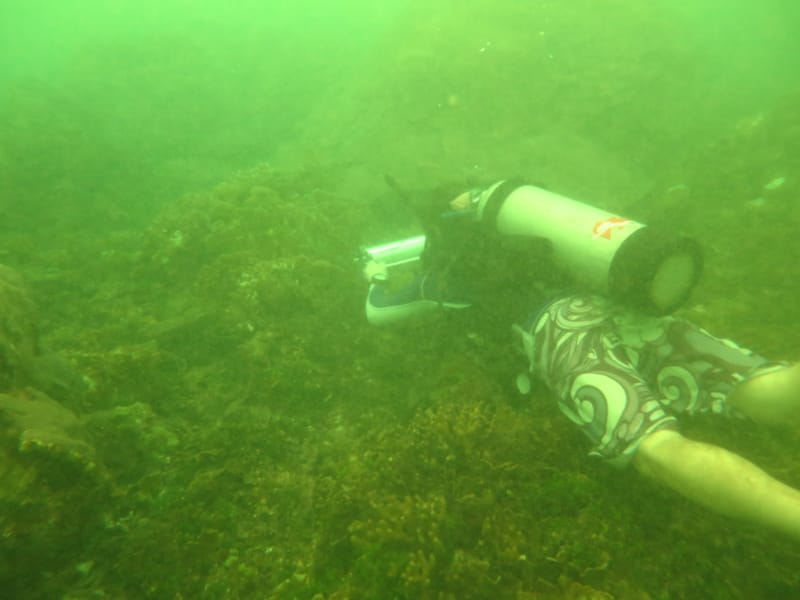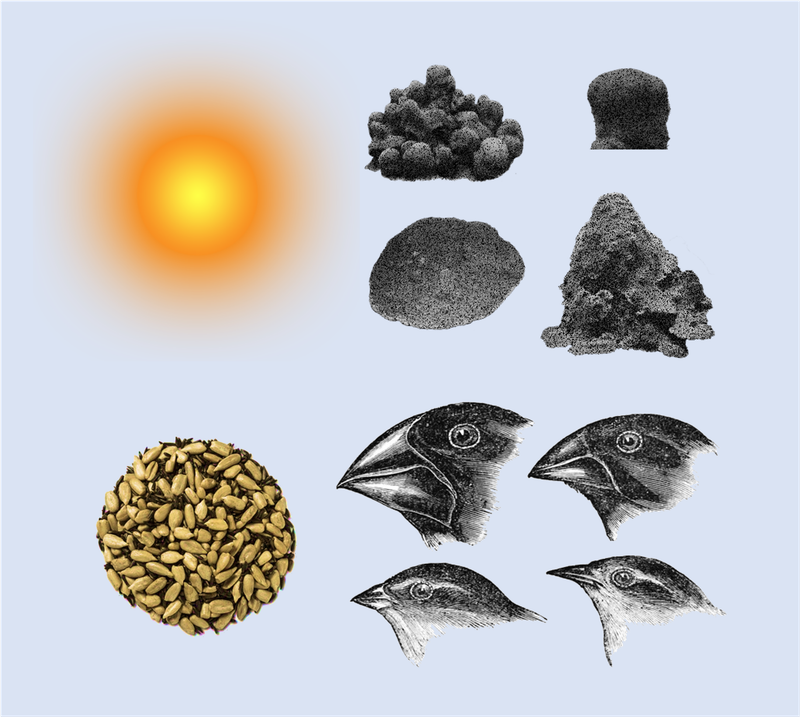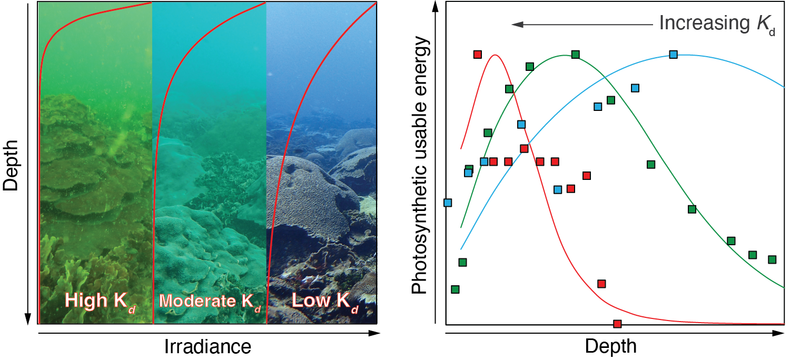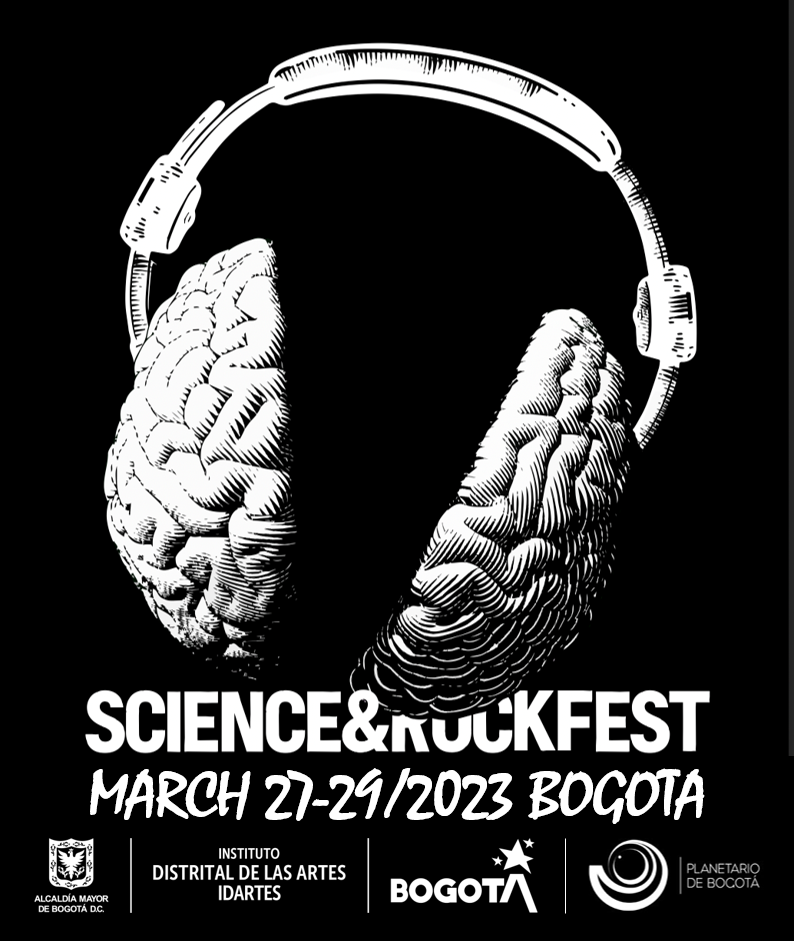The Pennsylvania State University, United States. 2016-2022
Read MoreTomás López-Londoño, Ph.D.
Connecting Science, Policy, and People to Conserve Coral Reefs and Ocean Health
About me
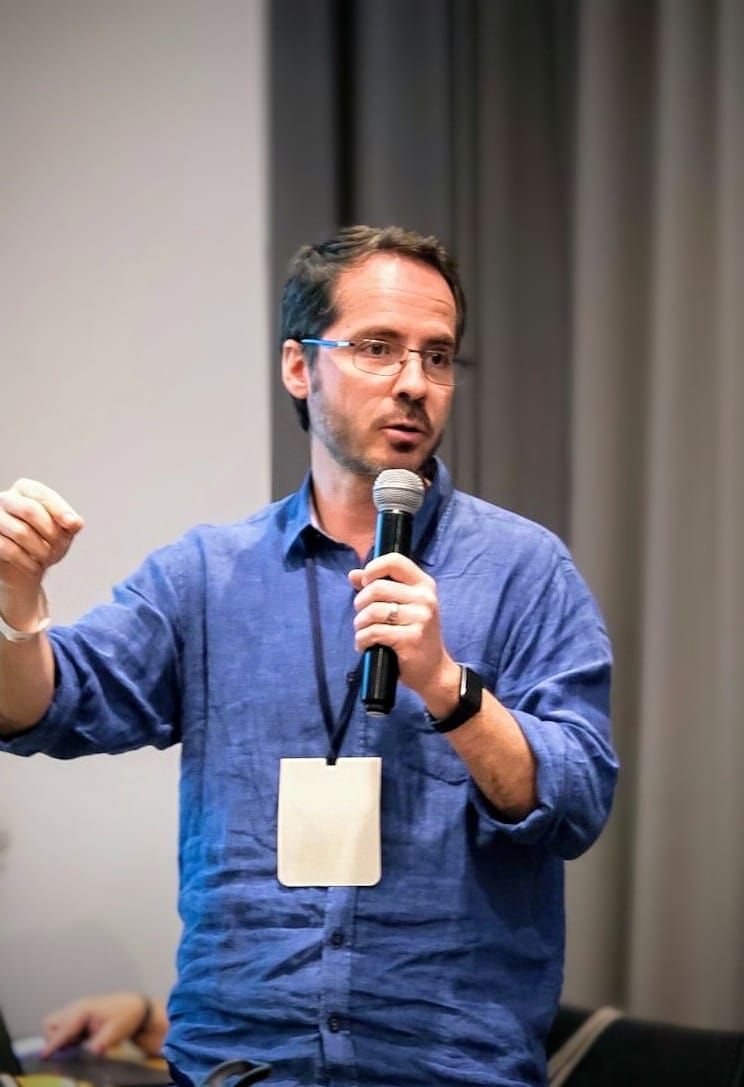
Education
Research
Coral Photobiology
Coral reefs are among the most biodiverse ecosystems on Earth. At the heart of these vibrant ecosystems, symbiotic corals play a central role as primary engineers. Over millions of years, diverse coral species have developed unique symbiotic relationships, morphological variations, and photoacclimation abilities that allow them to thrive under specific marine conditions. My research focuses on exploring these interactions to understand the adaptive strategies that drive niche partitioning in tropical corals.
Population and Community Ecology
One of my research goals is to explore the repercussions of the obligatory coral-algae symbiosis at the population and community levels. The unique dependence between photosynthetic zooxanthellae and their coral hosts makes tropical corals an intriguing model for studying the relationships between environmental gradients, photosynthetic productivity, morphology, and the distribution and abundance of coral species. By unraveling these complex interactions, I aim to enhance our understanding of the factors that shape biodiversity patterns, coral community structure, and population dynamics.
Global Change Impacts
One of my primary research goals is to delve into the impacts of climate change and water pollution on corals and coral reef communities. Specifically, I focus on the degradation of water optical properties caused by sedimentation and anthropogenic pollution. Through collaboration with my colleagues, our studies have shown that the gradual decline in water optical quality has a significant impact on corals' physiology and compromises their ability to construct and sustain reefs. By shedding light on these impacts, my research aims to contribute to the conservation efforts of coral reefs in the face of climate and environmental challenges.
Science-Based Restoration
Building on my scientific background, I provide technical guidance to national and international cooperation efforts focused on advancing coral reef restoration through evidence-based policy and practice. Working from within the public sector, I contribute to the design and implementation of integrated restoration strategies that connect scientific research with policy development and community-based action—reinforcing the foundation for effective, inclusive, and resilient coral reef recovery efforts that empower local communities as key partners in conservation.
TEACHING
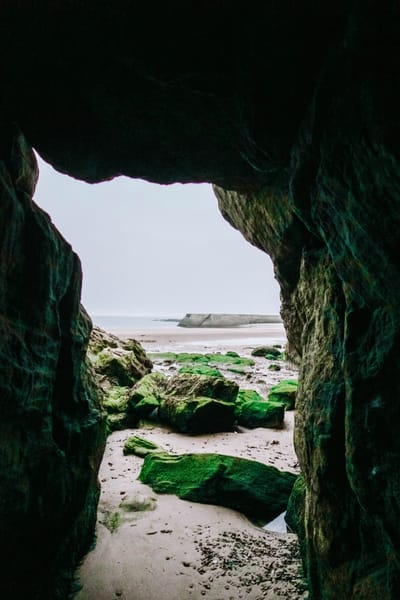
- Symbiosis (BIOL 406). Lecturer. Penn State University. In this advanced course, we delved into the significance of symbiotic interactions in nature and explored the unifying concepts that transcend various forms of symbiosis and other species interactions.
- Basic Concepts and Biodiversity (BIOL 110W). Lab TA. Penn State University. The primary focus in this course was to provide the students with the opportunity for a hands-on experience in the scientific process and to explore the incredible biological diversity of life on Earth.
- Population and Communities (BIOL 220W). Lab TA. Penn State University. Throughout this course, we introduced students to the fundamental principles, concepts, patterns, and processes that underpin the dynamics of populations, communities, and ecosystems.
- Light and Photosynthesis Workshop. Instructor. UNAM and Penn State University. For nearly two decades, this international workshop has explored the effects of light on photosynthesis, energy dynamics, and the adaptive strategies of marine organisms.
Projects
Explore the negative effects of water turbidity on the physiology and ecology of corals.
Read MoreStudy the importance of niche specialization on the origin and maintenance of corals diversity
Read MoreBio-optical models as an approach to describe the energy balance in corals at different levels of biological organization
Read MoreScenario where scientists and artists meet to teach, inspire and motivate future visionaries
Read MorePublications
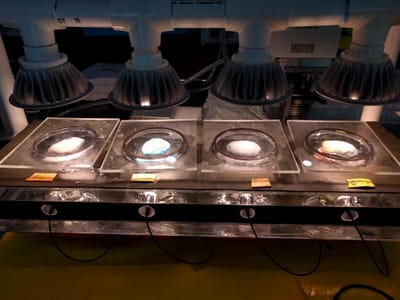
- López-Londoño T*, Howe C*, Townsend J, Galindo-Martínez CT, Roitman S, Badai A, Woodley C, Enríquez S, Kitano H, Smith T, Iglesias-Prieto R, Medina M, Prada C. 2024. Robustness trade-offs: an applied ecological approach to understand niche partitioning in sibling species of reef corals. [In Review].
- López-Londoño T, Enríquez S, Iglesias-Prieto R. 2024. Effects of surface geometry on light exposure, photoacclimation and photosynthetic energy acquisition in zooxanthellate corals. PLoS ONE. 19(1): e0295283. Link
- Shantz, AA, López-Londoño T, Gómez-Campo K, Iglesias-Prieto R, Medina M. 2024. Reassessing the role of herbivores on urban coral reefs: A case study from a heavily impacted reef near Cartagena Bay, Colombia. Urban Ecosystems 27, 689–697. Link
- Porras MF, Raygoza-Garay JA, Brought M, López-Londoño T, Chauta A, Crone M, Rajotte E, Ngoc P, Joshi NK, Peter K, Biddinger D. 2023. Fungicide ingestion reduces net energy gain and microbiome diversity of the solitary mason bee. Scientific Reports 14, 3229. Link
- López-Londoño T, Galindo-Martínez CT, Gómez-Campo K, González-Guerrero LA, Roitman S, Pollock FJ, Pizarro V, López-Victoria M, Medina M, Iglesias-Prieto R. 2023. Survival and physiological responses of corals exposed to anthropogenic turbidity in the Varadero Reef, Colombian Caribbean. Boletín de Investigaciones Marinas y Costeras. 52(1): 135-158. Link
- López-Londoño T, Gómez-Campo K, Hernández-Pech X, Enríquez S, Iglesias-Prieto R. 2022. Photosynthetic usable energy explains vertical patterns of biodiversity in zooxanthellate corals. Scientific Reports. 12: 20821. Link
- Porras MF, López-Londoño T, Duque J, Navas CA, Camargo E, Cuervo J, Gamba D, Castañeda L, Pardo J, Sandoval A, Rajotte E. 2022. Science & Rock Fest: connecting people and science through music and the arts. American Entomologist. 68(3): 64. Link
- Prada C*, López-Londoño T*, Pollock JF, Roitman S, Ritchie KB, Levitan D, Knowlton N, Woodley C, Iglesias-Prieto R, Medina M. 2022. Linking photoacclimation responses and microbiome shifts between depth-segregated sibling species of reef corals. Royal Society Open Science. 9(3): 211591. Link
- López-Londoño T, Galindo-Martínez CT, Gómez-Campo K, González-Guerrero LA, Roitman S, Pollock FJ, Pizarro V, López-Victoria M, Medina M, Iglesias-Prieto R. 2021. Physiological and ecological consequences of the water optical properties degradation on reef corals. Coral Reefs 40:1243–1256. Link
- González-Guerrero LA, Vásquez-Elizondo R, López-Londoño T, Hernán G, Iglesias-Prieto R, Enríquez S. 2021. Validation of parameters and protocols derived from chlorophyll a fluorescence commonly utilized in marine ecophysiological studies. Functional Plant Biology. 49(6):517-532. Link
- Roitman S, López-Londoño T, Pollock FJ, Ritchie KB, Galindo-Martínez CT, Gómez-Campo K, González-Guerrero LA, Pizarro V, López-Victoria M, Iglesias-Prieto R, Medina M. 2020. Surviving marginalized reefs: assessing implications of the microbiome on coral physiology and survivorship. Coral Reefs 39: 795–807. Link
- Porras MF, López-Londoño T, Rosh J, Biddinger D, Calvin D, Rajotte EG. 2020. A method for a long-term marking of spotted lanternfly (Lycorma delicatula Hemiptera: Fulgoridae) using a stable isotope of nitrogen. Environmental Entomology. 49(4): 993-997. Link
- Vega-Sequeda J, Díaz-Sánchez CM, Gómez-Campo K, López-Londoño T, Díaz-Ruiz M, Gómez-López DI. 2015. Marine biodiversity in remote areas of the Colombian Caribbean: New Shoal, Alice Shoal and Serranilla Bank. Boletín de Investigaciones Marinas y Costeras. 44(1): 199-224. Link
- López-Londoño T, Navas-Camacho R, Gil-Agudelo DL. 2011. Juvenile scleractinian coral mortality at Nuestra Señora del Rosario Archipelago, Colombian Caribbean. Boletín de Investigaciones Marinas y Costeras. 40(2): 419-424
- Gómez-Campo K, López-Londoño T, Gil-Agudelo DL, Navas-Camacho R, Rojas JA, Garzón-Ferreira J. 2011. Coral bleaching: a threat to the permanence of coral reefs in the Nuestra Señora del Rosario and San Bernardo archipelago. 319-328. In: Zarza-González, E. (Ed.) Environmental conservation in the Corales del Rosario y de San Bernardo Natural Park.
- Navas-Camacho R, Rodríguez-Ramírez A, Vega-Sequeda J, Gómez-Campo K, López-Londoño T, Gil-Agudelo DL, Reyes-Nivia C, Muñoz-Escobar L, Rojas JA, Duque DL, Garzón-Ferreira J. 2011. The National Monitoring System of Coral Reefs in Colombia in the Corales del Rosario y de San Bernardo Natural Park: 1998-2009. 330-350. In: Zarza-González, E. (Ed.). Environmental conservation in the Corales del Rosario y de San Bernardo Natural Park.
- Vega-Sequeda J, Navas-Camacho R, Gómez-Campo K, López-Londoño T. 2011. Installation and assessment of two new coral reef monitoring sites in the Colombian Caribbean. Boletín de Investigaciones Marinas y Costeras. 40 (1): 203-211. Link
- Rodríguez-Ramírez A, Garzón-Ferreira J, Batista-Morales A, Gil-Agudelo DL, Gómez-López DI, Gómez-Campo K, López-Londoño T, Navas-Camacho R, Reyes-Nivia MC, Vega-Sequeda J. 2010. Temporal patterns in coral reef, seagrass and mangrove communities from Chengue Bay, CARICOMP site (Colombia): 1993-2008. Revista de Biología Tropical. 58(3): 45-62. Link
- López-Londoño T, Santodomingo N, Reyes J. 2008. Presence of calcareous biogenic tubes on the coral Madracis myriaster (Scleractinia: Pocilloporidae) from deep-water in the Colombian Caribbean. Boletín de Investigaciones Marinas y Costeras. 37(2): 227-233. Link
- López-Londoño T, González-Maya J, Zárrate D, Balaguera-Reina S. 2008. Biodiversity and Cultural Conservation in the Sierra Nevada de Santa Marta, Colombia. Mountain Forum Bulletin 8(2): 43-44. Link
- López-Londoño T, Navas-Camacho R, Gil-Agudelo DL. 2007. Scleractinian coral recruitment as evidence of reef maintenance and renovation in the Rosario Archipelago. 73-77. In: INVEMAR. Report of the status of the marine environment and natural resources in Colombia: year 2006.
Collaborators
Roberto Iglesias-Prieto
Professor of Biology, The Pennsylvania State University
https://scholar.google.com/citations?hl=en&user=SLqBk9QAAAAJ
Susana Enríquez
Full Professor, Universidad Nacional Autónoma de México
https://scholar.google.com/citations?hl=en&user=X0B1VKIAAAAJ
Todd LaJeunesse
Professor of Biology, The Pennsylvania State University
https://scholar.google.com/citations?hl=en&user=HsWW4tsAAAAJ
Mónica Medina
Professor of Biology, The Pennsylvania State University
https://scholar.google.com/citations?hl=en&user=N5ogkesAAAAJ
Mitzy Porras
Assistant professor, San Francisco State University
https://scholar.google.com/citations?hl=en&user=vYHOJdsAAAAJ
Cheryl Woodley
Coral Health and Disease Program, NOAA
https://www.researchgate.net/profile/Cheryl-Woodley
Carlos Prada
Assistant Professor, University of Rhode Island
https://scholar.google.com/citations?user=RU9bkfEAAAAJ&hl=en&oi=ao
Hiroaki Kitano
The Systems Biology Institute, Director
https://scholar.google.com/citations?user=027fc-oAAAAJ&hl=ja
Tyler Smith
Associate Research Professor, University of the Virgin Islands
https://scholar.google.com/citations?user=Xe0gn_YAAAAJ&hl=en
Sofia Roitman
Integrated Data Sciences Section, Research Technologies Branch
https://www.linkedin.com/in/sofia-roitman-7393b891/
F. Joseph Pollock
Senior Coral Reef Resilience Scientist, TNC
https://scholar.google.com/citations?user=6C74eJ8AAAAJ&hl=en
Mateo López-Victoria
Associate Professor, Pontificia Universidad Javeriana
https://scholar.google.com/citations?hl=en&user=dZxdho0AAAAJ
Valeria Pizarro
Senior Researcher, Perry Institute for Marine Science
https://scholar.google.com/citations?hl=en&user=Kl6ST_8AAAAJ
Diego Zarrate-Charry
Conservation Program Director, ProCAT Colombia
https://scholar.google.com/citations?hl=en&user=aidI3eIAAAAJ
Kelly Gómez Campo
Postdoctoral Researcher, Helmholtz Institute for Functional Marine Biodiversity
https://loop.frontiersin.org/people/1323122/overview
Claudia T. Galindo-Martínez
Postdoctoral Researcher, Scripps Institution of Oceanography
https://scholar.google.com/citations?user=93ZkBLYAAAAJ&hl=en
Johanna C. Vega-Sequeda
PhD student, Université du Québec à Rimouski
https://ca.linkedin.com/in/johanna-carolina-vega-sequeda-6839b9126
Raul Navas Camacho
Coordinador Monitoreo de Arrecifes Coralinos, INVEMAR
https://co.linkedin.com/in/raul-navas-camacho-46331734?original_referer=https%3A%2F%2Fwww.google.com%2F
Colin Howe
Ph.D. Candidate in Biology at Pennsylvania State University
https://www.linkedin.com/in/colin-howe-476692152/
Contact
- Calle 37 #8-40, Bogotá, Colombia
- Ministerio de Ambiente y Desarrollo Sostenible
